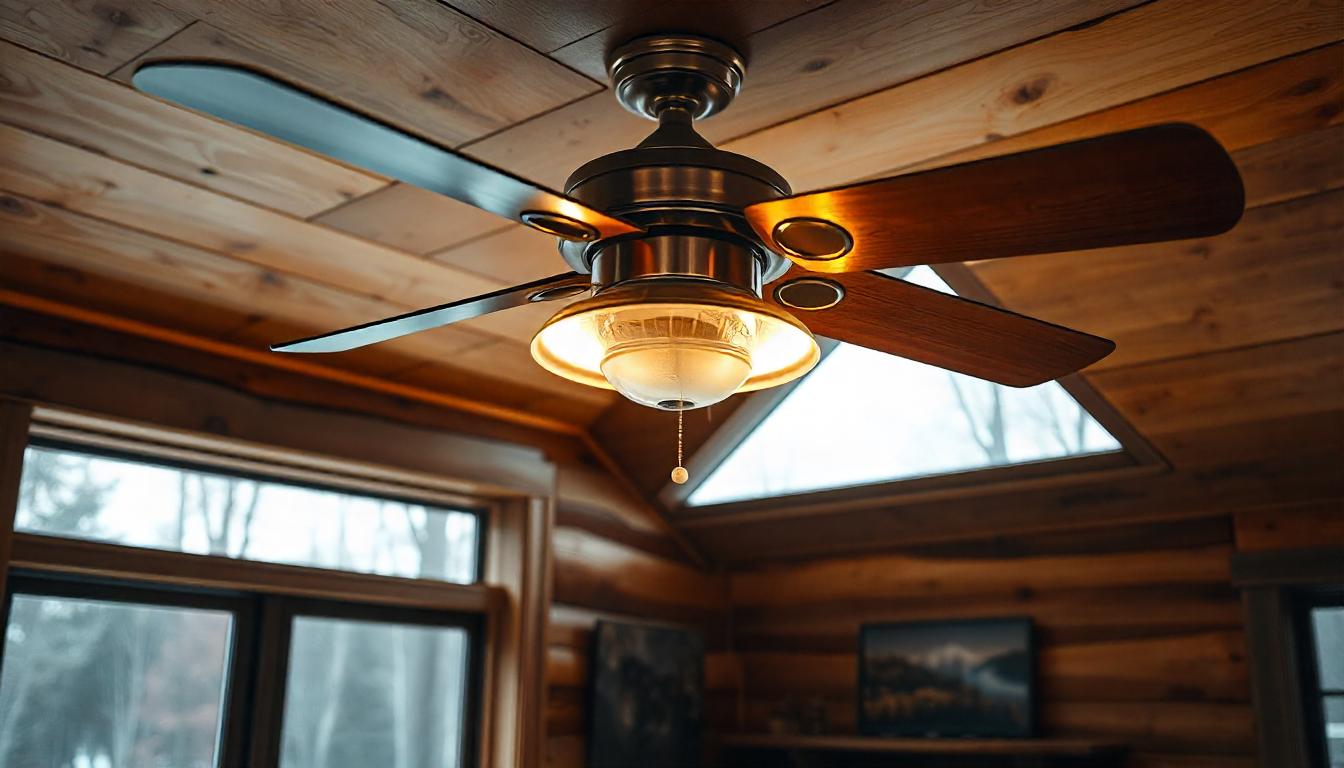Choosing the right ceiling fan size for your room is crucial for optimal airflow, energy efficiency, and overall comfort. Here’s a comprehensive guide to selecting the appropriate ceiling fan size based on room dimensions, ceiling height, and other important factors:
Ceiling Fan Size Chart by Room Size
The following chart provides general guidelines for matching room size with fan diameter:
| Room Size (Square Feet) | Fan Diameter (Inches) |
|---|---|
| Up to 75 sq ft | 29–36 inches |
| 76–144 sq ft | 36–42 inches |
| 144–225 sq ft | 44–50 inches |
| 225–400 sq ft | 50–54 inches |
| Over 400 sq ft | 60 inches or larger |
Detailed Recommendations by Room Type
Small Rooms (Up to 100 sq ft)
-
Fan Diameter: 36–44 inches
-
Example: A small bedroom or home office
-
Consideration: Smaller fans are sufficient for these spaces and won’t overwhelm the room visually.
Medium Rooms (100–200 sq ft)
-
Fan Diameter: 48–52 inches
-
Example: A medium-sized bedroom or dining room
-
Consideration: These rooms require a larger fan to ensure effective airflow.
Large Rooms (Over 200 sq ft)
-
Fan Diameter: 56–60 inches
-
Example: A spacious living room or family room
-
Consideration: Larger fans are necessary to circulate air effectively in these spaces. Multiple fans may be needed for very large rooms.
Additional Factors to Consider
Ceiling Height
-
Standard Ceilings (8–9 feet): Choose fans with a standard mount or a low-profile design.
-
High Ceilings (Over 9 feet): Use longer downrods or extension kits to ensure the fan blades are at an optimal height for air circulation.
Airflow Requirements
-
High Activity Areas: Rooms like kitchens or home gyms may require larger fans or multiple fans to meet airflow demands.
-
Energy Efficiency: Look for fans with Energy Star certification to ensure they are up to 40% more efficient than conventional models.
Blade Pitch and Shape
-
Blade Pitch: A higher blade pitch creates more airflow but consumes more energy.
-
Blade Shape: Angled blades provide better airflow than flat blades.
Installation Tips
-
Proper Clearance: Ensure the fan blades are at least 7–9 feet above the floor and 10–12 inches below the ceiling.
-
Electrical Requirements: Consult an electrician to ensure your ceiling can support the fan’s weight and that the electrical box is fan-rated.
Energy Savings and Efficiency
-
Energy Star Certification: Energy Star-certified fans are up to 60% more efficient than conventional models, helping you save on electricity bills.
-
LED Lighting: Fans with integrated LED lights offer additional energy savings and long-lasting illumination.
Conclusion
Choosing the right ceiling fan size for your room involves considering room dimensions, ceiling height, airflow requirements, and energy efficiency. By following the guidelines above, you can ensure optimal performance, comfort, and energy savings. If you have unique room layouts or specific cooling needs, consulting with a professional can provide tailored advice for the best results.
